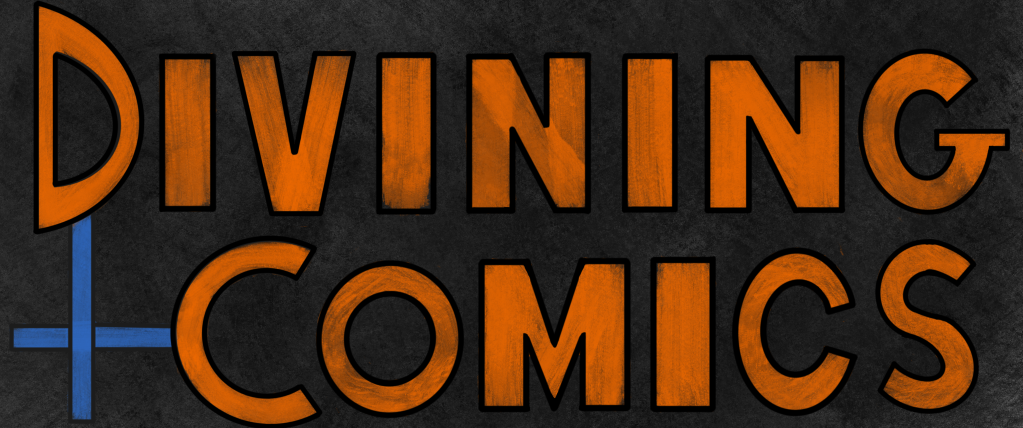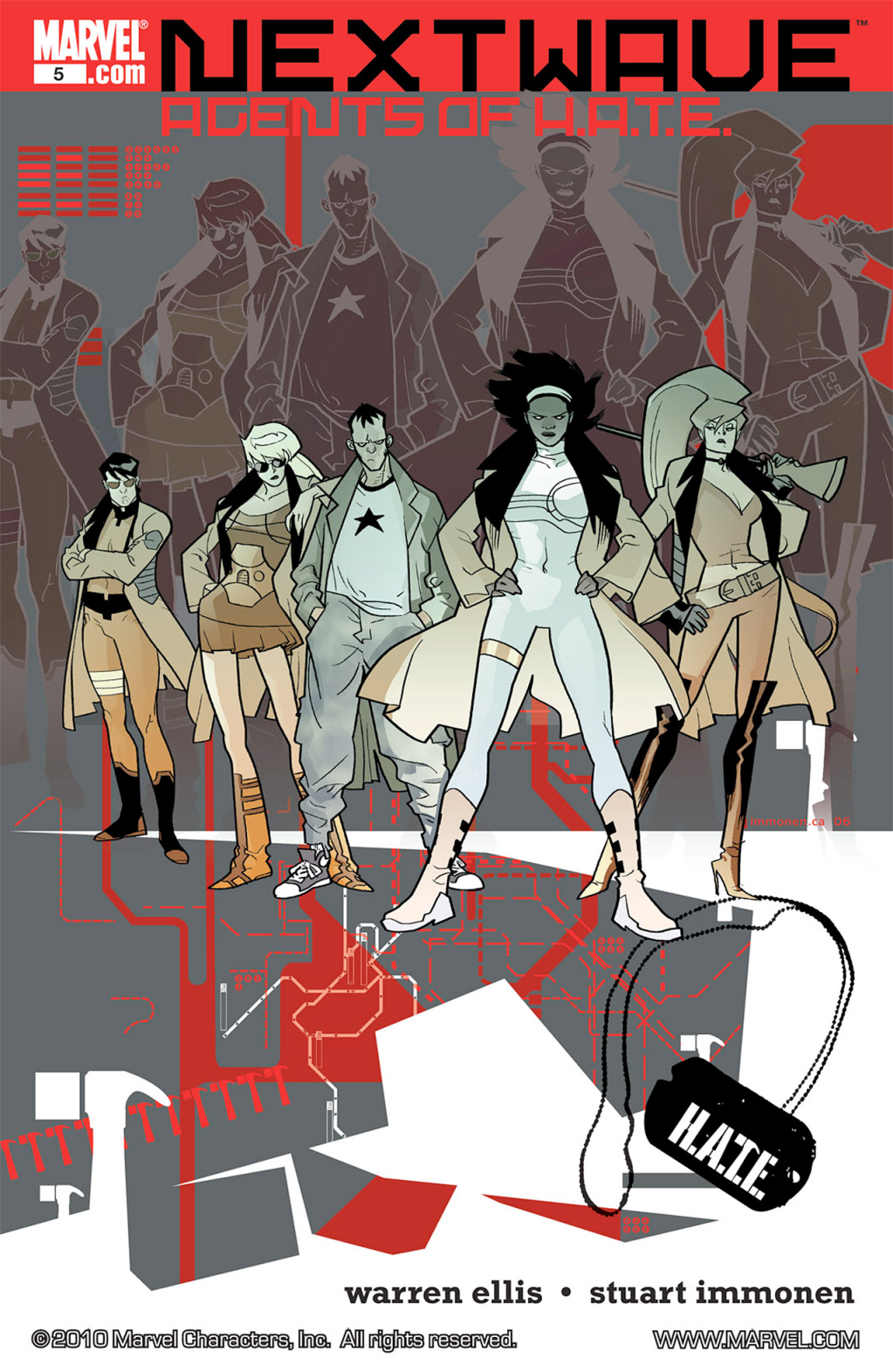Nextwave: Agents of H.A.T.E. # 5 and Building Character with the Cutaway Flashback
The cutaway gag is a staple of comedies, situational and animated. Not all of them are created equally. The best versions aren’t just funny non-sequiturs. The humor comes from the character. When Arrested Development has Lucille Bluth claims to Michael, “I love all my children equally,” she is comedically undermined by the flashback where she reveals, “I don’t care for Gob.” We learn about Lucille’s character and about her relationship to Michael and Gob. It is a quick joke, but it is packed with characterization that enhances the comedy.
Comic books can use a similar gag structure. The flashback panels are like looking into a magic mirror that reveals the truth of a situation, contrary to the simpler narratives the characters espouse. This Zone of Truth spell is put to excellent use in Nextwave: Agents of Hate # 5, penciled by Stuart Immonen, inked by Wade von Grawbadger, colored by Dave McCaig, lettered by VC’s Joe Caramagna, and written by Warren Ellis, who is accused by over sixty women and non-binary individuals of manipulation and emotional abuse. You can read more about that on the website somanyofus.com.
While several issues feature one-off gags of this nature, issue five in particular uses this trick for nearly every cast member. The artists convey flashback scenes by desaturating the colors and outlining the panels in a grey box. Let’s look at three characters in particular that this technique is used on: Machine Man Aaron Stack, Monica Rambeau aka Photon fka Captain Marvel, and Tabitha Smith, who has more noms du héro teammates.

Machine Man Aaron Stack’s flashback is multifunctional. It both undermines and explains his usual haughty behavior. For the entire series up to this point, Machine Man has talked down to the “fleshy ones”, his preferred nomenclature for humans. As is to be expected, the fleshy ones don’t like this. When he is finally called out, Machine Man’s defense is that he actually is just that superior, as evidenced by his time among the Celestials, an ancient, god-like alien race in the Marvel Universe.
The cutaway flashback tells a different story. Like the previously mentioned Arrested Development gag, Machine Man’s time among the Celestials comedically undermines his prior claims. These all-powerful beings also don’t like Machine Man. His vibes were always off. Ironically, this comedic bit also humanizes him. Machine Man has a Napoleon complex, feeling the need to put everyone around him down because he actually isn’t as awesome as he thinks he should be. This isn’t a non-sequitur, deriving humor from the randomness of the setup. It is enmeshed deeply with both the continuity and personality of Machine Man, using comedy and pathos to add depth to his character.

Nextwave only gives one panel for the cutaway flashback for Monica Rambeau, but it is densely packed with meaning. Monica comments about the ridiculousness of their situation, alleging that they never dealt with such nonsense when she was on the Avengers. The flashback reveals that they did in fact deal with childishly absurd comic book scenarios in absurd comic books for children. Back in the present, the narration tells us that Monica lies all of the time. This is simple enough on the surface, a mildly funny joke about Monica’s less than true recounting of her past.

But, digging in further, this too is revealing of Monica’s character. The narration notes that she is the leader of the Nextwave Squad, which mirrors her oft repeated claim of leading the Avengers. And in the flashback, Captain America, acting out of character as the boy scout he usually is stereotyped as, demands Monica cook his dinner because she isn’t able to handle the threat they are facing. We the reader are left with an interpretive choice, both revealing of Monica’s character. Is she lying about her time as an Avenger, making Captain America look like a fool because she wasn’t actually in charge? Or, is the flashback accurate, and Monica’s motivation for retelling an idealized version of the past because her time as a leader was undermined by misogyny and racism?
I think the latter is more interesting, and is a better development of her character. Yes, she is gruff and no-nonsense. She demands respect. This could easily fall into the stereotype of the angry black woman, but this flashback calls the trope into question. In this story, Captain America, a walking symbol who proudly wears the flag on his body, treats Monica the way that the United States often treats black women. If she lies about her past, it is because she was mistreated then. This single panel generates empathy and character nuance.
By now, the pattern should be coming into focus. Tabitha Smith, aka Boom Boom, has been portrayed in a singular manner up to this point. One panel, flashing back to her established comic book continuity, comically subverts the present happenings. But, it also acts as an explanation for why she has been characterized as she has thus far.
In Nextwave, Tabby is the extreme stereotype of a dumb Californian blonde. She is carefree, fun-loving, and not ever serious. Elsa Bloodstone, the image of competence and badassery, questions if she is ready for their current battle. But, as the flashback reminds us, Tabitha’s previous experience was in the extreme nineties under the tutelage of the most Rob Liefeld character ever created, Cable. She was a teenage soldier in a crazed mutant’s time war. Much of her fictional life up to this point was defined by constant levels of threat and danger. What kind of person is created by such an environment? If it isn’t another soldier, then it’s probably someone that swung the other direction.

As I mentioned previously, a similar style of cutaway flashback explains the origin of The Captain in issue 4, and details the troubled childhood of Elsa Bloodstone in issue 8. This joke structure doesn’t have to be merely lazy “random” humor. It can be a magical tool to add metaphorical depth to literal 2-dimensional characters. Next time you notice the comic you are reading using a flashback, to tell a joke or otherwise, see if past actually explains some of the character’s psychology. This will help you alongside your journey of Divining Comics.
If you haven’t already, consider supporting this work at ko-fi.com/spikestonehand. There, you can leave a tip or buy Zine versions of these articles. Doing this helps keep the website going.


Leave a comment